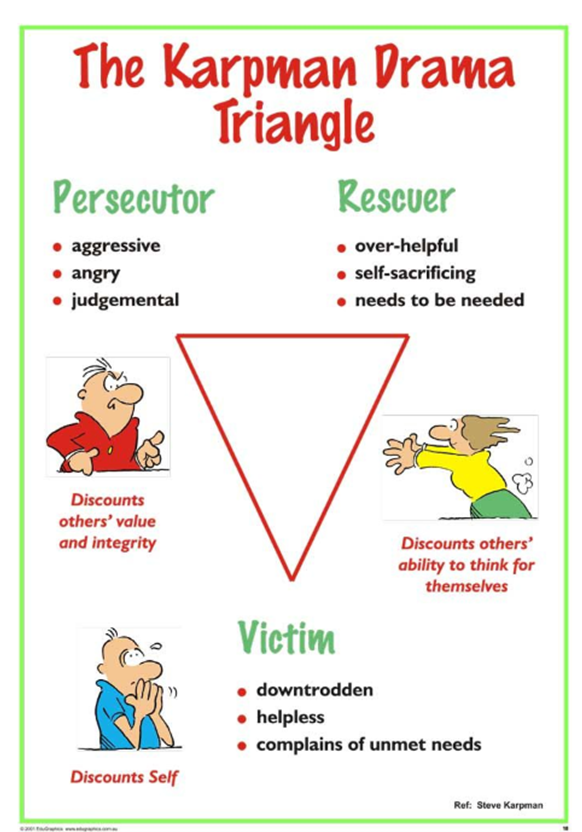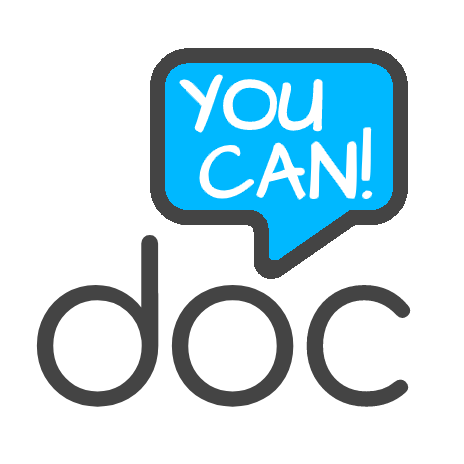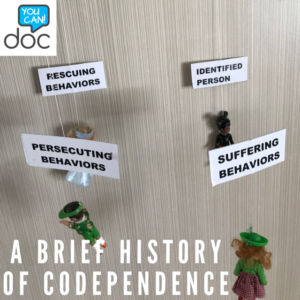Check out:
How Do Normal Families Adjust To Addiction?
Rescuing Behaviors – First Responders
Persecuting Behaviors
Suffering Behaviors – Are You A Martyr?
A normal healthy family (and even families that aren’t healthy) can adjust to a family member’s “problem behavior” by developing “codependence.” A family member’s “problem behavior” may include such behaviors as: pornography addiction, substance abuse, mental illness, health problems, disabilities, etc. etc. “Codependence” is the name of the dysfunctional behaviors that surrounding family members develop as they adapt to the family member who has the “problem behavior.”
The dysfunctional adaptive behaviors that surrounding family members develop are similar across different circumstances. For example, codependent behavior exhibited by a wife adjusting to a husband’s porn problem would be similar to a dad adjusting to a daughter’s mental illness. In my experience the core components of codependence are:
1) A family member with a problem behavior- some form of addiction, inability, or disability. This behavior can be intentional e.g. alcohol use or a consequence of nature e.g. down’s syndrome. The key ingredient is a family member with a problem and perceived as needing help.
2) A family member (or members) adapting to the person with the problem using a series of dysfunctional coping skills. These dysfunctional codependent behaviors are easily identified and have a pattern.
Of course not all families adjust to another’s problem with codependence, many families adjust in healthy ways.
There are numerous explanations of these patterns of codependence. Here are just a few.
Codependence and 12-Step Groups
Codependence has its’ origin with Al-Anon 12-step family support groups. Al-Anon members are people, who are worried about someone with a drinking problem. Many who go to Al-Anon/Alateen are in despair, feeling hopeless, unable to believe that things can ever change. Al-Anon members want their lives to be different, because they have developed dysfunctioinal coping behavors as they have lived with an “alcoholic.” These codpendent coping behavors have failed to bring about change. Al-Anon teaches its members new coping behaviors whether the alcoholic is still drinking or not. Al-Anon was one of the first organization to promote the concept of “Family Illness.”
Alcoholism is a family disease. The disease affects all those who have a relationship with a problem drinker. Those of us closest to the alcoholic suffer the most, and those who care the most can easily get caught up in the behavior of another person. We react to the alcoholic’s behavior. We focus on them, what they do, where they are, how much they drink. We try to control their drinking for them. We take on the blame, guilt, and shame that really belong to the drinker. We can become as addicted to the alcoholic, as the alcoholic is to alcohol. We, too, can become ill. (Al-Anon).
In fact now we have CODA, CoDependants Anonymous. CODA is a 12-step support group focusing specifically on “Codependence.” CODA has its’ list of Patterns and Characteristics of Codependence. CODA identifies codependent behaviors like: Avoidance Patterns, Control Patterns, Compliance Patterns, Low Self-Esteem Patterns, and Denial Patterns.
Melody Beattie
Melody Beattie, in her book Codependent No More: How to Stop Controlling Others and Start Caring for Yourself, defines a codependent as:
“…One who has let another person’s behavior affect him or her, and who is obsessed with controlling that person’s behavior. The other person might be a child, an adult, a lover, a spouse, a brother, a sister, a grandparent, a parent, a client, or a best friend. He or she could be an alcoholic, a drug addict, a mentally or physically ill person, a normal person who occasionally has sad feelings, or one of the people mentioned earlier.”
The specific signs of codependency can often look different depending on the person experiencing it.
Karpman Drama Triangle
The Karpman Drama Triangle is a social model of human interaction – the triangle maps a type of destructive interaction – codependence, that can occur between people in conflict. The drama triangle model is a tool used in psychotherapy, specifically transactional analysis, and often in 12-step support groups. Here is a brief description of the three “codependent” roles involved in the triangle:
The Victim: (Victim) The Victim’s stance is “Poor me!” The Victim feels victimized, oppressed, helpless, hopeless, powerless, ashamed, and seems unable to make decisions, solve problems, take pleasure in life, or achieve insight.
The Rescuer: (Hero) The rescuer’s line is “Let me help you.” A classic enabler, the Rescuer feels guilty if they don’t go to the rescue. Yet their rescuing has negative effects: It keeps the Victim dependent and gives the Victim permission to fail. The rewards derived from this rescue role are that the focus is taken off of the rescuer. When they focus their energy on someone else, it enables them to ignore their own anxiety and issues.
The Persecutor: (Villain) The Persecutor insists, “It’s all your fault.” The Persecutor is controlling, blaming, critical, oppressive, angry, authoritative, rigid, and superior.

Although tthe names have changed, but the concepts remain the same. Here is a brief video An Introduction to the Drama Triangle. This 3 minute video uses the labels Villain, Hero, and Victim to explain the copdependent roles involved in the Drama Triangle.
Over the years, everyone seems to have come on board with their own perspective of codependence. Here’s Oprah’s take. For example check-out her article How to Stop Being a Martyr.
Here is my Facebook Live video on this topic:
Next go to Rescuing Behaviors- First Responders

